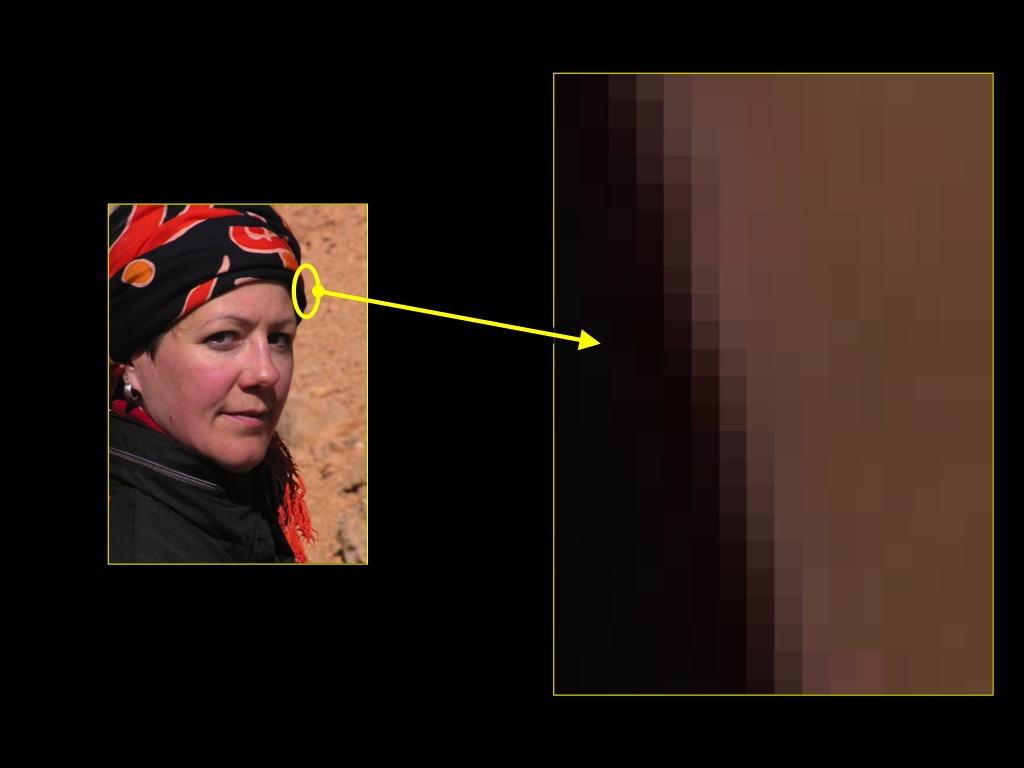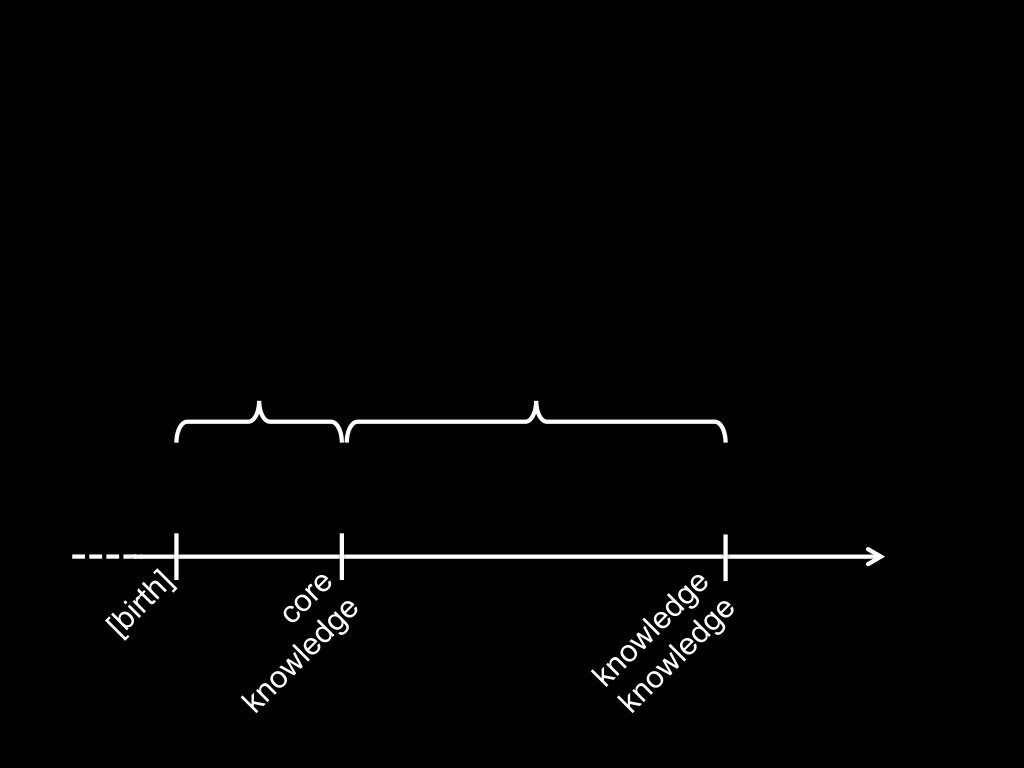Press the right key for the next slide (or swipe left)
also ...
Press the left key to go backwards (or swipe right)
Press n to toggle whether notes are shown (no equivalent if you don't have a keyboard)
Press m or double tap to see a menu of slides
Core Knowledge
What is core knowledge? What are core systems?
‘Just as humans are endowed with multiple, specialized perceptual systems, so we are endowed with multiple systems for representing and reasoning about entities of different kinds.’
(Carey and Spelke 1996: 517)

‘core systems are
- largely innate
- encapsulated
- unchanging
- arising from phylogenetically old systems
- built upon the output of innate perceptual analyzers’
(Carey and Spelke 1996: 520)
representational format: iconic (Carey 2009)
The Simple View
The Core Knowledge View
core system vs module
‘core systems are
- largely innate,
- encapsulated, and
- unchanging,
- arising from phylogenetically old systems
- built upon the output of innate perceptual analyzers’
(Carey and Spelke 1996: 520)
Modules are ‘the psychological systems whose operations present the world to thought’; they ‘constitute a natural kind’; and there is ‘a cluster of properties that they have in common’
- innateness
- information encapsulation
- domain specificity
- limited accessibility
- ...
But is the notion of core system (or module) explanatory?
‘there is a paucity of … data to suggest that they are the only or the best way of carving up the processing,
‘and it seems doubtful that the often long lists of correlated attributes should come as a package’
Adolphs (2010 p. 759)
‘we wonder whether the dichotomous characteristics used to define the two-system models are … perfectly correlated …
[and] whether a hybrid system that combines characteristics from both systems could not be … viable’
Keren and Schul (2009, p. 537)
‘the process architecture of social cognition is still very much in need of a detailed theory’
Adolphs (2010 p. 759)
Why do we need a notion like core system?
| domain | evidence for knowledge in infancy | evidence against knowledge |
| colour | categories used in learning labels & functions | failure to use colour as a dimension in ‘same as’ judgements |
| physical objects | patterns of dishabituation and anticipatory looking | unreflected in planned action (may influence online control) |
| minds | reflected in anticipatory looking, communication, &c | not reflected in judgements about action, desire, ... |
| syntax | [to follow] | [to follow] |
| number | [to follow] | [to follow] |
If this is what core knowledge is for, what features must core knowledge have?
‘Just as humans are endowed with multiple, specialized perceptual systems, so we are endowed with multiple systems for representing and reasoning about entities of different kinds.’
(Carey and Spelke 1996: 517)
‘core systems are
- largely innate
- encapsulated
- unchanging
- arising from phylogenetically old systems
- built upon the output of innate perceptual analyzers’
(Carey and Spelke 1996: 520)
representational format: iconic (Carey 2009)
If this is what core knowledge is for, what features must core knowledge have?
limited accessibility to knowledge
maximum grip aperture
(source: Jeannerod 2009, figure 10.1)

core systems -- questions:
- Is appealing to core systems (modules) explanatory?
- Can the Core Knowledge View explain the discrepancy?
- Is the view I've been developing consisten with the Core Knowledge View?
- Is core knowledge all one thing?
- How do you get from core knowledge to knowledge knowledge?
